Physical Address
304 North Cardinal St.
Dorchester Center, MA 02124
An uncommon distinct type of myxoma characterized by the presence of thin-walled blood vessels
This is likely to represent the same entity as cutaneous myxoma, including the lesions seen in Carney complex
Presents during adulthood and shows slight male predilection
Commonly affects the head and neck and trunk areas
Usually solitary
Size: 1 to 5 cm
Benign tumors, but frequently recur locally
No reports of metastasis
Dermal or subcutaneous lobules of plump, stellate or spindle-shaped, bland-looking cells embedded in basophilic, highly vascular, myxoid matrix
Aggregates of inflammatory cells, particularly neutrophils, are commom
May contain entrapped epithelial component that resembles keratinous cysts
Some consider this equivalent to cutaneous myoma
Neoplastic cells express vimentin and sometimes CD68, factor XIIIa, and CD34
The myxoid stroma can be highlighted with Alcian blue or mucicarmine stains
Aggressive angiomyxoma
Angiomyofibroblastoma
Low-grade myxofibrosarcoma
Nerve sheath myxoma
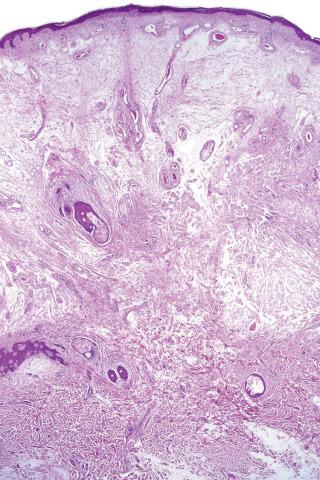
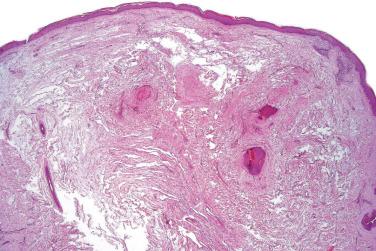
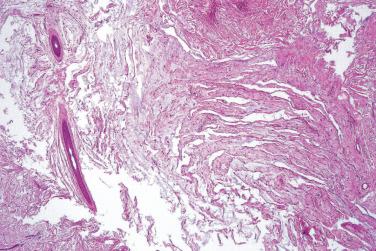
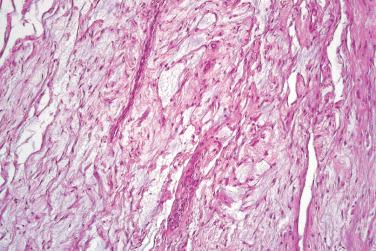
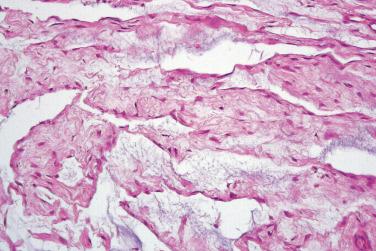
Benign mesenchymal tumor composed of bland, spindle-shaped cells embedded in a characteristically hypovascular myxoid stroma
An exclusively intramuscular neoplasm
It usually involves the large skeletal muscles of extremities, particularly the thigh
Superficial cases involving head and neck and hypothenar area of the hand are extremely rare
Majority of patients are adults
Two-thirds of patients are females
Rare cases are associated with Mazabraud syndrome (single or multiple intramuscular myxomas and polyostotic fibrous dysplasia)
Most cases present as slowly growing, painless muscular masses
Angiographic studies demonstrate poorly vascularized neoplasms
Surgical excision is virtually always curative
Recurrence is unusual even after incomplete resection
Cellular variant has a higher tendency for recurrence
Classically described as “hypocellular” and “hypovascular” tumor
Commonly infiltrates adjacent muscle fibers
Abundant myxoid stroma with sparse, capillary-sized blood vessels
Uniform, cytologically bland, spindle-shaped cells with eosinophilic cytoplasm
A cellular variant has been described
Tumors typically lack cytological atypia, mitoses, and necrosis
Neoplastic cells express vimentin
Variable expression with CD34, desmin, and smooth muscle actin
S100 protein is not normally expressed
Recurrent point mutations involving the GNAS1 gene are common
Chondrosarcoma
Low-grade myxofibrosarcoma
Low-grade fibromyxoid sarcoma
Myxoid liposarcoma
Myxoid neurothekoma
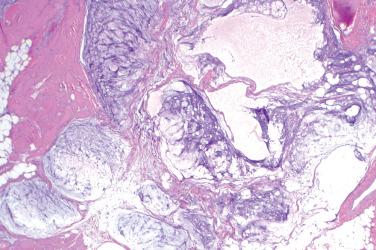
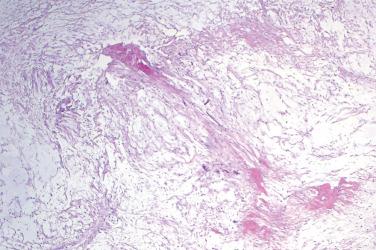
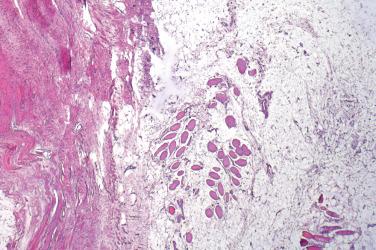
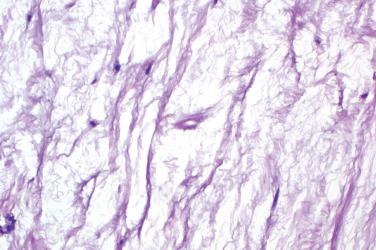
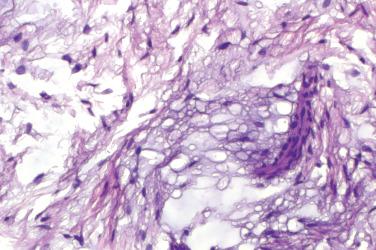
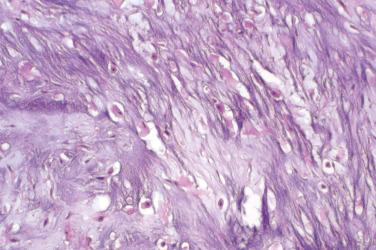
A rare, benign mesenchymal tumor that histologically resembles intramuscular myxoma and usually arises in the vicinity of a joint
Wide age range
The majority of affected individuals are males (more than 70%) in their third to fifth decades
The most common location is around the knee
Mainly involves the periarticular tendons, ligaments, joint capsule, muscles, and the adjacent subcutis
Most cases present as a mass, sometimes associated with pain
Benign tumors often cured by complete excision
Recurrence is common; can be multiple
Recurrence usually takes place within 18 months
Recurrence commonly involves subcutaneous adipose tissue
Histologically virtually identical to intramuscular myxoma
Unlike intramuscular myxoma, cystic changes are more common, and rare mitoses as well as atypical reactive cells can be seen
Alcian blue–positive matrix
Neoplastic cells express vimentin
Variable expression with CD34, desmin, and smooth muscle actin
S100 protein is not normally expressed
Recurrent point mutations involving the GNAS1 gene are not seen
Ganglion cyst
Chondrosarcoma
Low-grade myxofibrosarcoma
Low-grade fibromyxoid sarcoma
Myxoid liposarcoma
Myxoid neurothekoma
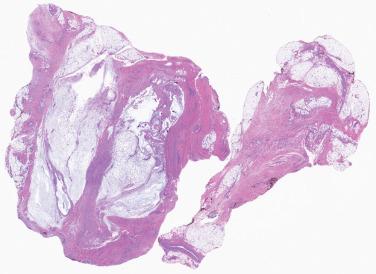
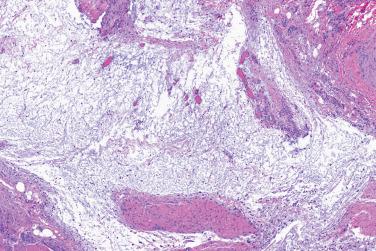
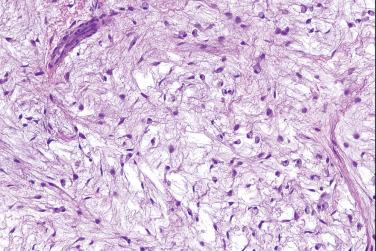
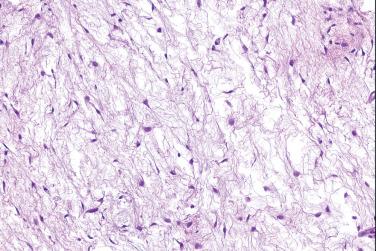
A rare, suprasternal, heterogeneous tumor composed of an admixture of spindle cells, epithelial cells, and adipose tissue with a presumed branchial origin
Despite the name, there is no definite evidence of thymic origin or thymic differentiation
The designation branchial anlage mixed tumor has been proposed to describe this entity
Majority of patients are adults
Striking male predominance
Slowly growing, small, lower neck mass
Generally benign lesion
Cured by complete resection
No reports of metastasis
Tumors consist of three haphazardly arranged components: epithelial cell, spindle cell, and adipose tissue
Spindle cell component usually predominates
The epithelial component consists of either solid or cystic squamous epithelium
Glandular structures are less common
The spindle cells exhibit bland-looking elongated nuclei
Myoid differentiation of spindle cells is sometimes seen
Myoepithelial differentiation is uncommon
Tumor cells are devoid of pleomorphism
Mitoses are usually absent
Scattered lymphocytes may be seen
Both epithelial and spindle cells express cytokeratins, particularly high-molecular-weight forms
CD34 is expressed by the spindle cells only
Androgen receptor is expressed by the spindle cells
Muscle actin and myoglobin can be expressed by spindle cells
Desmin and S100 protein are negative
Ectopic cervical thymoma
Thymolipoma
Teratoma
Biphasic synovial sarcoma
Malignant peripheral nerve sheath tumor with glandular differentiation
Benign mixed tumor/myoepithelioma of soft tissue
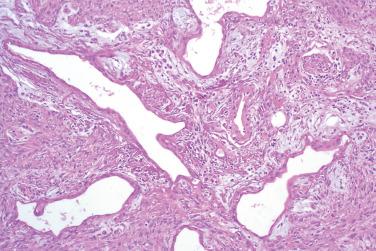
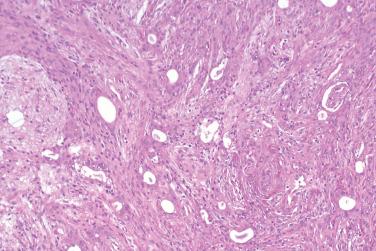
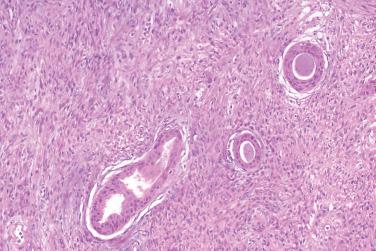
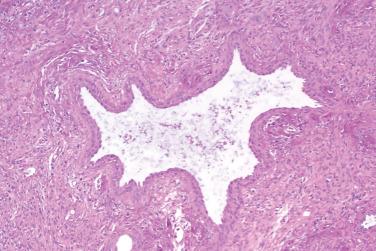
Also known as hemosiderotic fibrohistiocytic lipomatous lesion
A rare, superficial proliferation composed of spindle cells and adipocytes that almost exclusively involves the ankle
An association between myxoinflammatory fibroblastic sarcoma and hemosiderotic fibrolipomatous tumor reported recently, as both lesions can share an identical translocation at t(1;10)(p22;q24)
Affected individuals are usually adults
Predilection for females
Slowly growing, may be painful
Size is variable
History of trauma is obtained in up to 70% of cases
Treated by local excision
Local recurrence can occur
No reports of metastasis
Well-circumscribed lobules of mature adipocytes admixed with areas composed of spindle cells
The spindle cell areas show striking hemosiderin deposition
No or mild atypia
No or rare mitoses
Sometimes associated with venous stasis and can be histologically virtually identical to early pleomorphic, hyalinizing angiectatic tumor (but is not pathogenically related to this tumor)
Hybrid lesions with myxoinflammatory fibroblastic sarcoma can be encountered (the two tumors do appear to be pathogenically related in at least a subset of cases)
The spindle cells express vimentin, CD34, and calponin
Distinctive translocation t(1;10)(p22;q24) involving the TGFBR3 and MGEA5 genes in the great majority of cases, frequently also associated with amplifications of chromosome 3p11~12, resulting in formation of ring chromosomes (also designated marker chromosomes ) with increased expression of VGLL3 and CHMP2B genes
Myxoinflammatory fibroblastic sarcoma can harbor this fusion in a subset of cases
TGFBR3-MGEA5 fusions are more commonly encountered in hybrid hemosiderotic fibrolipomatous tumor/myxoinflammatory fibroblastic sarcoma lesions than in classical “pure” myxoinflammatory fibroblastic sarcomas
These features suggest a pathogenical relationship between at least a subset of these two tumor types
Spindle cell lipoma
Atypical lipomatous tumor
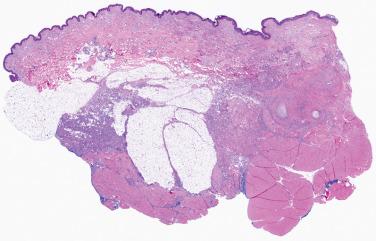
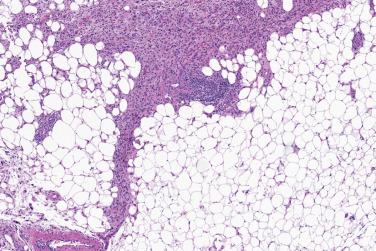
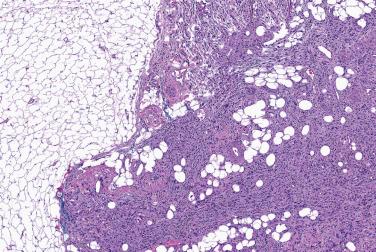
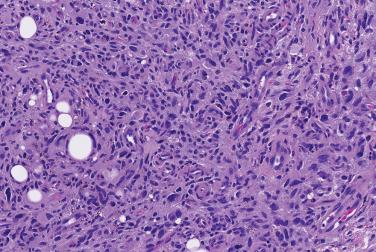
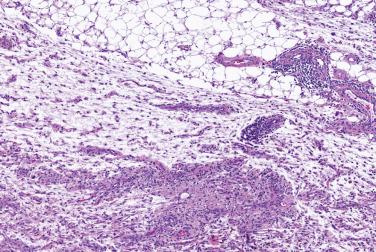
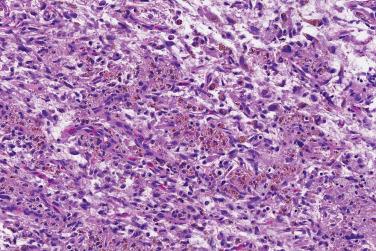
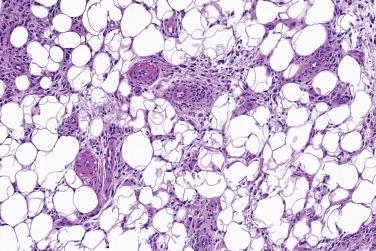
A mesenchymal neoplasm composed of stellate or spindle cells that commonly exhibit myoid differentiation embedded in an abundant myxedematous stroma
Affected patients are almost exclusively females 40 to 60 years of age
Much less common in women older than 60 years and does not affect children
Tumors are usually deeply located in pelvic, perineal, anorectal, or retroperitoneal regions
Commonly present as asymptomatic, slowly growing mass
Patients may present with feeling of pressure, discomfort, or pain
Size is variable but often large (>10 cm)
Locally aggressive tumors (intermediate)
Recurrence is common, which can be late, but usually not more than once
No metastases have been reported
Usually managed by surgical excision
May respond to hormonal therapy using gonadotropin-releasing hormone agonist
Sparsely to moderately cellular neoplasms composed of bland stellate and spindled cells embedded in a loosely collagenized, myxoid matrix with scattered vessels of varied caliber
Higher cellularity may be observed at perivascular and peripheral areas
Some neoplastic cells show relatively abundant eosinophilic cytoplasm and exhibit fibroblastic and myofibroblastic features and appear to be hormonally influenced
Well-developed myoid differentiation best evident around medium-size blood vessels and nerve trunks
Mitoses are rare or absent
Neoplastic cells focally express desmin, smooth muscle actin, muscle specific actin, vimentin, CD34, and estrogen and progesterone receptors
S100 protein is negative and Ki-67 index is very low (<1%)
The myxoid stroma can often be highlighted with Alcian blue or mucicarmine stains
Superficial angiomyxoma
Angiomyofibroblastoma
Low-grade myxofibrosarcoma
Nerve sheath myxoma
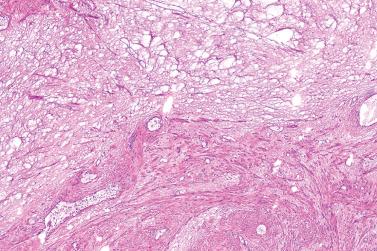
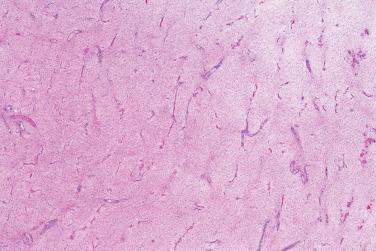
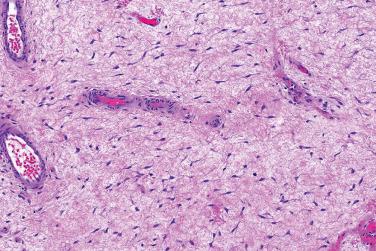
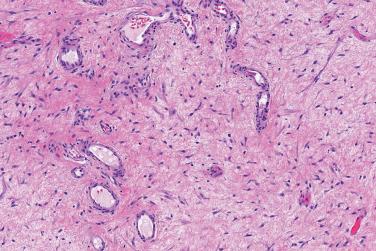
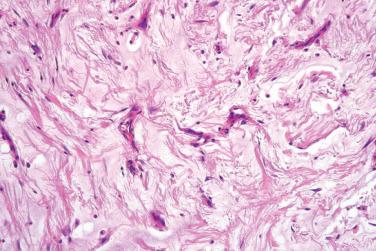
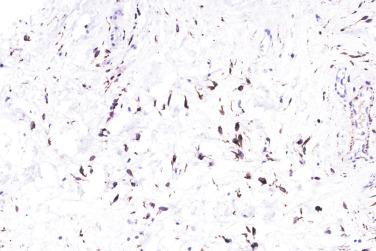
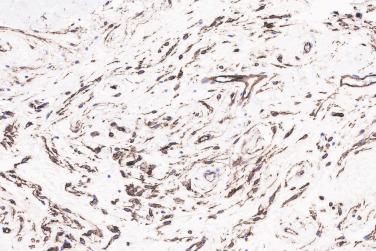
Distinctive proliferation confined to the dermis by convention and composed of highly atypical, epithelioid histiocyte–like cells and spindled fibroblast-like cells, in variable proportions, occurring on sun-exposed and sun-damaged skin with invariably benign clinical course
Diagnosis is one of exclusion and requires additional immunohistochemistry
Mutations in TP53 induced by UVA exposure have been implicated in the pathogenesis
Adult patients, most commonly in the eighth decade of life (mean age 77 years)
Male predominance (M:F = 9 : 1)
Ultraviolet (UV) irradiation a key factor implicated in pathogenesis
Sun-exposed and sun-damaged skin
Most frequently on the scalp, followed by forehead, ear, nose, and face
Rapidly growing polypoid or nodular lesion, frequently ulcerated on the surface
Complete excision usually curative
Invariably benign when strict criteria applied
Virtually always benign when confined to the dermis
Locally aggressive behavior and even metastasis can be seen with significant subcuticular involvement (see Pleomorphic dermal sarcoma later)
Admixture of (in variable proportions)
Pleomorphic, fibroblast-like spindle cells
Histiocyte-like epithelioid cells
Multinucleated giant cells
Lesional cells growing in sheets and fascicles
No connection with the epidermis
Numerous mitoses, including atypical ones
Tumor necrosis absent
Lymphovascular invasion absent
Perineural invasion absent
Generally well-demarcated proliferation in the dermis
Focal, limited extension into superficial subcutis not uncommon and allowed by some authorities
Expansile
Limited lacelike
Surface ulceration in about 50% of cases
Epidermal collarette at the periphery of the lesion in 20%, possible extension at variable length along the base of the lesion
Solar elastosis, usually marked in the surrounding dermis
Diagnosis of exclusion
Morphological variants (represent either a focal phenomenon or predominant/exclusive component of the lesion)
Spindle cell with more limited pleomorphism
Proliferation of monomorphic spindle cells
No pleomorphism of conventional atypical fibroxanthoma
Fascicular growth of spindle cells with eosinophilic cytoplasm
High mitotic activity
Pseudoangiomatous or “pigmented” variant with hemosiderin deposition
Areas of hemorrhage, usually coupled with hemosiderin deposition
Pseudovascular spaces lined by lesional cells (pleomorphic spindle cells, epithelioid cells, multinucleated giant cells)
Pleomorphic lesional cells can protrude into the pseudolumina
Phagocytosis of hemosiderin and erythrocytes occasionally seen
Keloidal
Bright eosinophilic, hypocellular/acellular, collagenous, keloidlike areas
Usually a focal phenomenon
Keloidal areas can be separated from the epidermis by a grenz zone
Occasionally in a perivascular distribution
Regressing
Degree of fibrosis from 10% to 90% of the lesion
Thickened collagen bundles with sclerosis (early)
Lamellar arrangement of collagen fibers with hyalinization (late)
Clear cell change
Numerous intracytoplasmic lipid vacuoles in lysosome-rich cells
Can also represent a degenerative phenomenon
Staining for glycogen uniformly negative
Granular cell change
Bright eosinophilic granular cytoplasm
Likely a degenerative phenomenon related to the accumulation of intracytoplasmic lysosomes
Myxoid degeneration
Accumulation of hyaluronic acid in the stroma
Can be highlighted by periodic acid–Schiff (PAS) or Alcian blue
Osteoclast-like giant cells
Reactive, osteoclast-like giant cells dispersed among conventional atypical fibroxanthoma
True atypical osteoclast-like giant cells also described, likely developing from large, pleomorphic, multinucleated giant cells
Diagnosis of exclusion: must exclude other mimics by immunohistochemistry
By definition, consistently negative for low- and high-molecular-weight cytokeratins, desmin, and S100 protein
Reactive S100 protein–positive dendritic cells can on occasion be numerous and should not be mistaken for lesional cells
Smooth muscle actin positivity (45%), EMA positivity (24%), usually focal
CD99 and CD10 frequently positive, but very nonspecific
Cytoplasmic CD31 positivity in about 10%
Staining is cytoplasmic and finely granular
Not as prominent as in endothelial cells
Lesional macrophages can also display cytoplasmic positivity
Granular cell variant
NKIC3 positive
PAS positive after diastase digestion
Squamous cell carcinoma
Metaplastic carcinoma
Melanoma
Angiosarcoma
Leiomyosarcoma
Undifferentiated (dermal) pleomorphic sarcoma
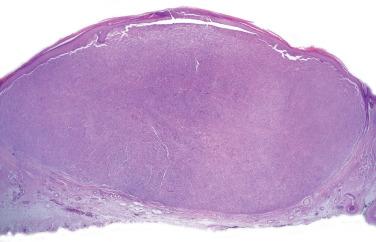
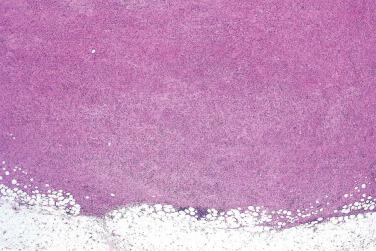
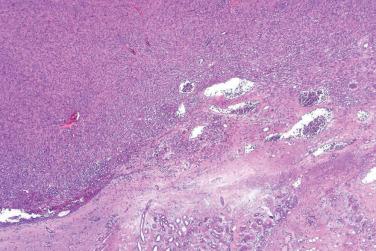
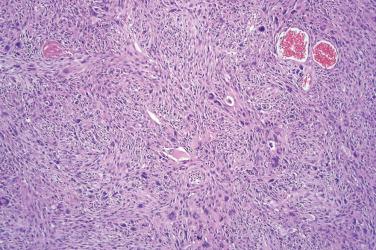
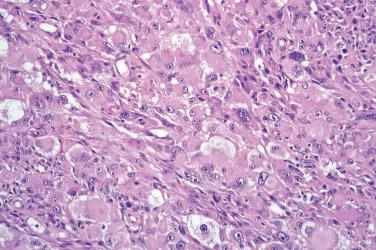

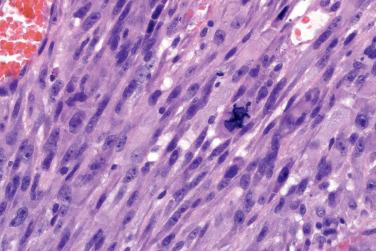
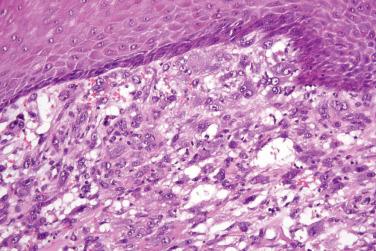

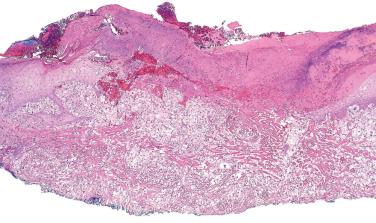

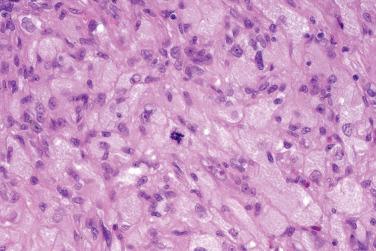
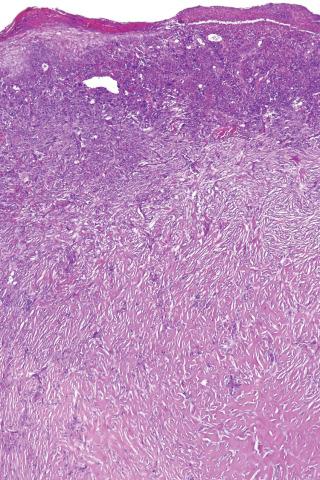
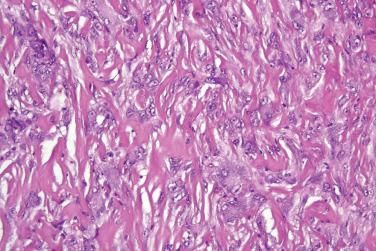
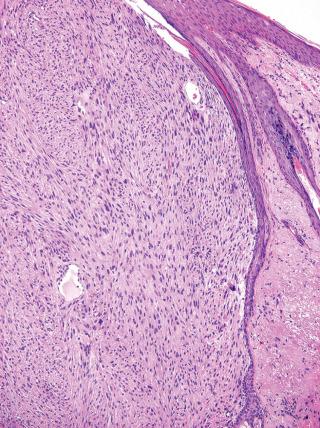

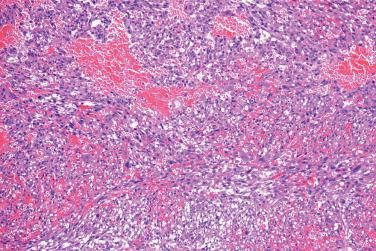
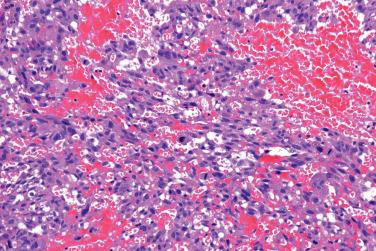
Uncommon variant of fibrohistiocytic tumor characterized by the presence of cystic hemorrhagic spaces
Formerly known as angiomatoid malignant fibrous histiocytoma
Affected patients are children or young adults
Tumors are usually located in the subcutaneous tissue of extremities or trunk
Deeply situated lesions are less commonly encountered
Superficial, slow growing
Size: few millimeters to 2 cm
May be associated with systemic symptoms (fever, anemia, malaise, and weight loss)
Good outcome achieved with simple surgical excision
Local recurrence is reported in 10%
Deep lesions elicit higher tendency for recurrence
Metastasis to local lymph nodes is seen in only 1% of cases
Pseudoencapsulated, multicystic, hemorrhagic lesions
Neoplastic elements are bland-looking, round or spindle cells admixed with chronic inflammatory cells
Inflammatory infiltrates can organize with germinal centers simulating lymph node metastasis
Tumor cells may exhibit mild to moderate pleomorphism and occasional mitoses
Neoplastic cells commonly express CD68, CD99, muscle actin, desmin, EMA, and calponin
No reactivity with factor VIII, CD34, CD31, S100 protein, or cytokeratin
t(12;16)(q13;p11) creating ATF1 - FUS fusion gene, t(12;22)(q13;q12) creating ATF1 - EWSR1 fusion gene, or t(2;22)(q33;q12) creating CREB1 - EWSR1 fusion gene—this latter being the most common
Cells show variable features, including fibroblastic, myofibroblastic, and histiocytic differentiation
Aneurysmal fibrous histiocytoma
Angiosarcoma
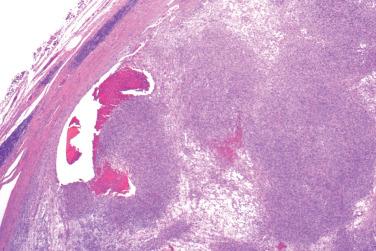
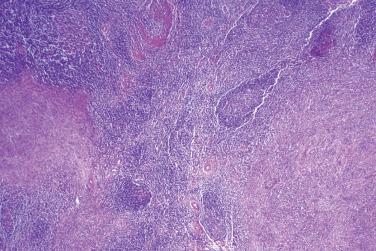
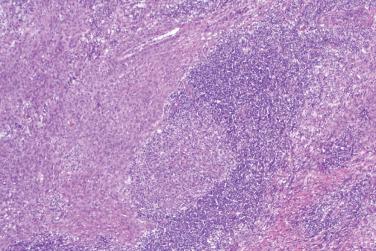
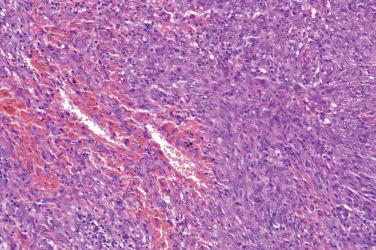
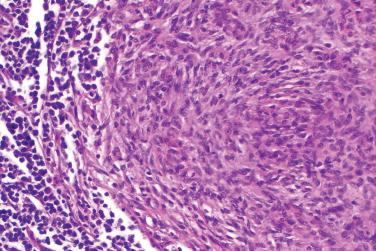

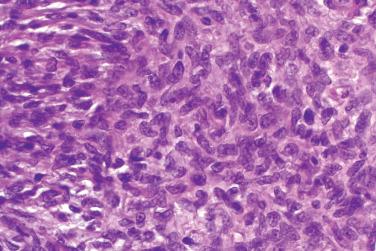
Become a Clinical Tree membership for Full access and enjoy Unlimited articles
If you are a member. Log in here